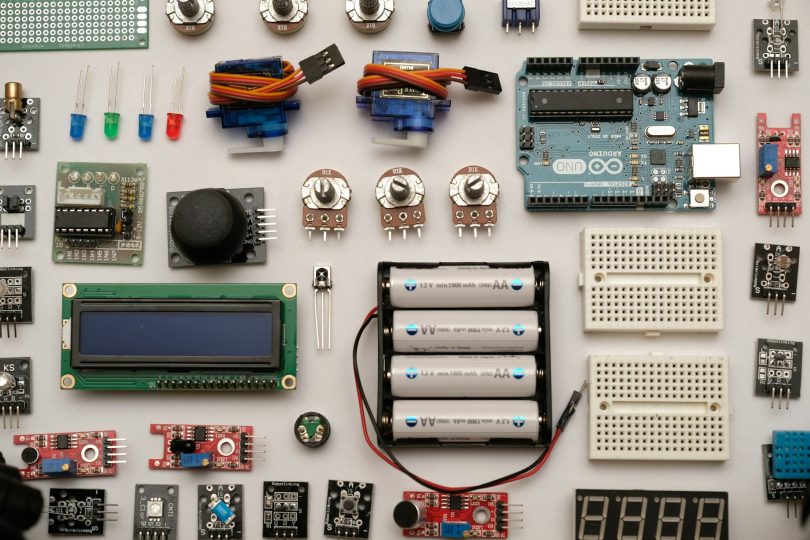The Dawn of a Connected Era
In today’s digital age, technology has advanced beyond imagination, bringing together devices, systems, and people like never before. At the heart of this transformation lies the Internet of Things (IoT) — a network of interconnected devices that communicate, share data, and make intelligent decisions. From smart homes and wearable devices to industrial automation and connected vehicles, IoT is shaping how we live, work, and interact with the world.
The idea is simple yet revolutionary: everyday objects — like your refrigerator, smartwatch, or even your car — can connect to the internet and exchange data. But the impact is profound, influencing industries, economies, and societies worldwide.
What Is the Internet of Things?
The Internet of Things (IoT) refers to the network of physical devices that use sensors, software, and other technologies to connect and exchange data with other devices and systems over the internet. These “things” can range from small household items like thermostats and light bulbs to massive industrial machines in factories.
IoT enables these devices to collect and share real-time information, allowing for smarter decisions, automation, and improved efficiency. For example, a smart thermostat can learn your daily routine and adjust the temperature automatically, saving energy and ensuring comfort.
How IoT Works: The Power of Connectivity
IoT operates through a combination of hardware, software, and communication technologies. The process generally involves four main components:
-
Sensors and Devices – These gather data from the environment (like temperature, motion, or location).
-
Connectivity – The devices connect to the cloud via Wi-Fi, Bluetooth, 5G, or other networks.
-
Data Processing – The collected data is processed either locally or in the cloud.
-
User Interface – Finally, the information is delivered to users through an app or dashboard, allowing them to monitor and control devices remotely.
This seamless connection between the physical and digital worlds creates smarter systems capable of responding to human needs in real-time.
Applications of IoT in Daily Life
The Internet of Things has moved far beyond a futuristic concept — it’s already part of our daily lives. Here are some areas where IoT is making a major difference:
1. Smart Homes
IoT has revolutionized how we manage our homes. Smart speakers, lighting systems, thermostats, and appliances can all be controlled using a smartphone or voice command. These technologies not only add convenience but also improve energy efficiency and security.
2. Healthcare and Wearable Devices
In healthcare, IoT enables remote patient monitoring, smart medical devices, and wearable fitness trackers. These tools collect data such as heart rate, sleep patterns, and blood pressure, allowing doctors to monitor patients in real time and provide personalized care.
3. Industrial IoT (IIoT)
Factories and industries are leveraging IoT to improve productivity, safety, and equipment maintenance. Sensors in machinery can detect malfunctions before they occur, reducing downtime and saving costs.
4. Smart Cities
IoT plays a critical role in building smart cities — urban areas that use connected technologies for efficient traffic management, waste disposal, lighting, and public safety. This results in better resource management and an improved quality of life for residents.
5. Agriculture
Farmers are using IoT-based smart farming tools to monitor soil moisture, weather patterns, and crop health. This allows them to optimize irrigation, reduce waste, and increase productivity.
6. Transportation and Vehicles
Connected vehicles are a growing trend in IoT. These vehicles can communicate with each other and with road infrastructure to prevent accidents, manage traffic flow, and provide real-time navigation updates.
Read More: Smart Ways to Save on Home Insurance
Benefits of the Internet of Things
The IoT brings numerous advantages to individuals, businesses, and governments alike.
1. Efficiency and Automation
IoT allows devices to perform tasks automatically without human intervention. This leads to faster decision-making, optimized processes, and reduced human error.
2. Data-Driven Insights
With IoT, organizations can collect massive amounts of data that can be analyzed to uncover trends, predict issues, and make informed decisions.
3. Cost Savings
Automation and predictive maintenance can help reduce operational costs and prevent costly breakdowns, especially in industrial sectors.
4. Improved Quality of Life
From health monitoring to home automation, IoT has enhanced comfort, safety, and convenience in our daily routines.
5. Environmental Sustainability
Smart systems can optimize energy use, reduce waste, and promote eco-friendly practices — contributing to a sustainable future.
Challenges of IoT Implementation
Despite its many advantages, IoT also presents several challenges that need to be addressed for its full potential to be realized.
1. Security Concerns
With billions of devices connected to the internet, cybersecurity becomes a major issue. Hackers can exploit vulnerabilities to steal data or disrupt systems. Ensuring strong encryption and security protocols is essential.
2. Privacy Issues
IoT devices collect vast amounts of personal data. Without proper data protection, this information could be misused or exposed, raising serious privacy concerns.
3. Compatibility and Standardization
Different devices often operate on various platforms, making integration complex. A lack of standardization can hinder smooth communication between devices.
4. Data Overload
The massive volume of data generated by IoT can overwhelm systems that aren’t equipped to handle or analyze it efficiently.
5. High Implementation Costs
Setting up IoT infrastructure — including sensors, connectivity, and software — can be expensive, particularly for small businesses or developing nations.
The Future of IoT: What Lies Ahead
The future of the Internet of Things is full of promise. With advancements in artificial intelligence, 5G networks, and edge computing, IoT is becoming faster, smarter, and more accessible.
In the coming years, we can expect to see:
-
More autonomous systems, such as self-driving cars and robotic assistants.
-
Greater personalization, with devices learning and adapting to individual preferences.
-
Expansion into rural and underdeveloped areas, bringing smart solutions to agriculture, education, and healthcare.
-
Increased focus on data privacy, as governments and organizations introduce stricter regulations to protect users.
IoT will also play a vital role in shaping the Metaverse, where connected devices will merge with virtual environments to create immersive digital experiences.
Conclusion:
The Internet of Things is not just a technological innovation — it’s a movement toward a smarter, more connected world. From enhancing our daily lives to transforming industries, IoT’s impact is undeniable. However, as we continue to embrace this digital revolution, it’s important to prioritize security, privacy, and ethical use of technology.
With responsible development and thoughtful implementation, IoT has the power to connect the world — one device at a time — leading us into an era of unprecedented innovation and possibility.


